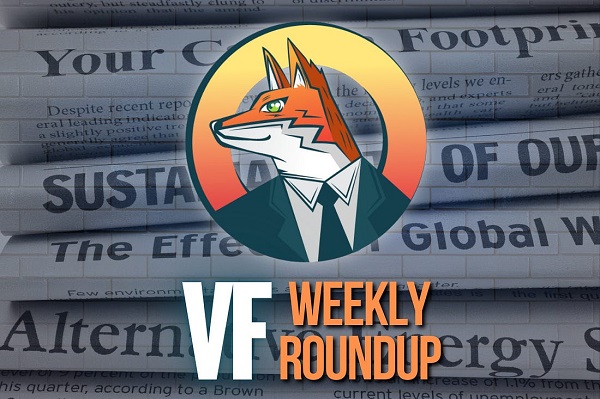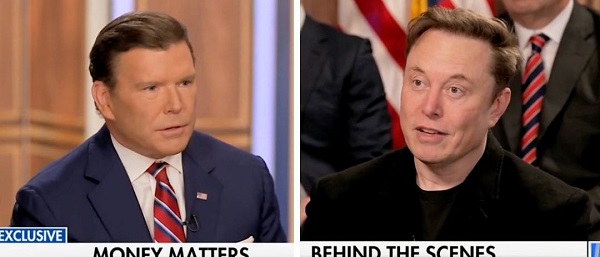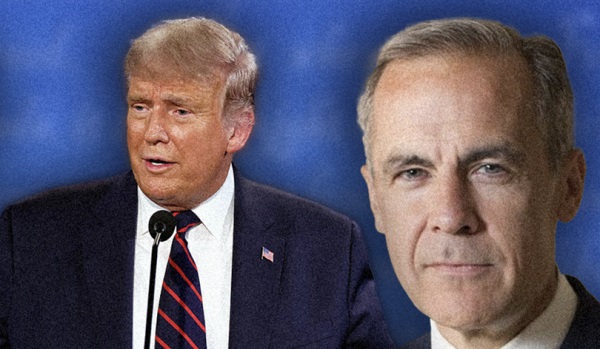Business
U.S. Seizes Fentanyl Shipment From Canada In Seattle, As Washington Pressures Ottawa on Crime Networks

U.S. Customs and Border Protection officers have intercepted a shipment containing more than one pound of fentanyl from Canada, marking the latest sign of an accelerating crisis along the BC-Washington border. The fentanyl, concealed within a package believed to have originated in British Columbia, was discovered during a targeted enforcement operation at a Seattle shipping facility on February 6.
The package contained a brown, rock-like substance wrapped in plastic bags. Subsequent testing confirmed it was fentanyl, the synthetic opioid driving tens of thousands of overdose deaths in North America each year.
Area Port Director Rene Ortega, speaking about the seizure, underscored its broader implications. “Fentanyl is an extremely dangerous synthetic drug that continues to devastate communities across the United States,” Ortega said. “CBP remains committed to using every available tool to stop these lethal substances before they reach our streets.”
The latest seizure is part of an escalating pattern that has prompted increasingly aggressive responses from Washington. President Donald Trump has warned of sweeping tariffs in the coming weeks unless Ottawa delivers a credible, actionable plan to crack down on transnational crime networks driving fentanyl production. These networks—operating primarily out of British Columbia—are deeply entrenched with organized crime groups from China and Mexico.
The Bureau has reported extensively on Washington’s mounting frustration with Canada’s handling of the fentanyl crisis. BC Mayor Brad West, who has been in direct communication with senior U.S. officials, has described an urgent shift in tone from American law enforcement and intelligence agencies. In a high-level 2023 meeting with U.S. Secretary of State Antony Blinken, West was briefed on just how seriously Washington views Canada’s role in the illicit drug trade.
“This is no longer just a Canadian domestic issue,” West told The Bureau. “Secretary Blinken made it clear that the Biden administration sees fentanyl as an existential threat. They’re building a global coalition and need Canada fully on board. If we don’t show real progress, the U.S. will protect itself by any means—tariffs or otherwise.”
Concerns extend beyond law enforcement. According to multiple sources with direct knowledge of U.S. intelligence assessments, American agencies have begun withholding key evidence from their Canadian counterparts, citing a lack of confidence that Ottawa will act on it. West confirmed that in his ongoing discussions with senior U.S. officials, they have voiced alarm over the level of access major figures in Asian organized crime appear to have within Canada’s political class.
“They’re basically asking, ‘What’s going on in Canada?’” West said.
The frustration is not new. For years, U.S. and international law enforcement agencies have sought to curb the transnational reach of organizations like Sam Gor, the powerful Asian organized crime syndicate that dominates much of the fentanyl precursor supply chain. But Canada’s response has been widely seen as inadequate. Critics argue that political sensitivities and reluctance to confront entrenched criminal networks have left Canadian law enforcement hamstrung.
The question now is whether Ottawa will take decisive action. Bringing forward measures as sweeping as a RICO-style anti-mafia statute or invoking the notwithstanding clause to bypass legal obstacles to tougher enforcement would represent a sharp departure from the status quo. Both approaches would require confronting entrenched political, legal and economic interests, as well as explaining why existing laws have failed to secure convictions against the most powerful actors in organized crime.
West believes the shifting geopolitical landscape may force Ottawa’s hand. Washington’s patience, he warns, ran thin years ago—and the U.S. is now signaling it will no longer wait.
The Bureau is a reader-supported publication.
To receive new posts and support my work, consider becoming a free or paid subscriber.
2025 Federal Election
Alcohol tax and MP pay hike tomorrow (April 1)

The Canadian Taxpayers Federation is calling on all party leaders to stop a pair of bad policies that are scheduled to happen automatically on April 1: pay raises for members Parliament and another alcohol tax increase.
“Party leaders owe taxpayers answers to these two questions: Why do you think you deserve a pay raise and why should Canadians pay higher taxes on beer and wine?” said Franco Terrazzano, CTF Federal Director. “Politicians don’t deserve a raise while millions of Canadians are struggling.
“And the last thing Canadians need is another tax hike when they pour a cold one or uncork a bottle with that special someone.”
MPs give themselves pay raises each year on April 1, based on the average annual increase in union contracts with corporations with 500 or more employees.
The CTF estimates tomorrow’s pay raise will amount to an extra $6,200 for backbench MPs, $9,200 for ministers and $12,400 for the prime minister, based on contract data published by the federal government.
After tomorrow’s pay raise, backbench MPs will receive a $209,300 annual salary, according to CTF estimates. A minister will collect $309,100 and the prime minister will take home $418,600.
Meanwhile, the alcohol escalator automatically increases excise taxes on beer, wine and spirits every year on April 1, without a vote in Parliament. Alcohol taxes will increase by two per cent tomorrow, costing taxpayers about $40 million this year, according to Beer Canada estimates.
The alcohol escalator tax has cost taxpayers more than $900 million since it was imposed in 2017, according to Beer Canada estimates.
“Politicians are padding their pockets on the same day they’re raising beer taxes and that’s wrong,” Terrazzano said. “If party leaders want to prove they care about taxpayers, they should stop the MP pay raises.
“And if party leaders care about giving Canadian brewers, distillers and wineries a fighting chance against tariffs, it’s time to stop hitting them with alcohol tax hikes year after year.”
The CTF released Leger polling showing 79 per cent of Canadians oppose tomorrow’s MP pay raise.
2025 Federal Election
Poilievre To Create ‘Canada First’ National Energy Corridor

From Conservative Party Communications
Poilievre will create the ‘Canada First’ National Energy Corridor to rapidly approve & build the infrastructure we need to end our energy dependence on America so we can stand up to Trump from a position of strength.
Conservative Leader Pierre Poilievre announced today he will create a ‘Canada First’ National Energy Corridor to fast-track approvals for transmission lines, railways, pipelines, and other critical infrastructure across Canada in a pre-approved transport corridor entirely within Canada, transporting our resources within Canada and to the world while bypassing the United States. It will bring billions of dollars of new investment into Canada’s economy, create powerful paycheques for Canadian workers, and restore our economic independence.
“After the Lost Liberal decade, Canada is poorer, weaker, and more dependent on the United States than ever before,” said Poilievre. “My ‘Canada First National Energy Corridor’ will enable us to quickly build the infrastructure we need to strengthen our country so we can stand on our own two feet and stand up to the Americans.”
In the corridor, all levels of government will provide legally binding commitments to approve projects. This means investors will no longer face the endless regulatory limbo that has made Canadians poorer. First Nations will be involved from the outset, ensuring that economic benefits flow directly to them and that their approval is secured before any money is spent.
Between 2015 and 2020, Canada cancelled 16 major energy projects, resulting in a $176 billion hit to our economy. The Liberals killed the Energy East pipeline and passed Bill C-69, the “No-New-Pipelines” law, which makes it all but impossible to build the pipelines and energy infrastructure we need to strengthen the Canadian economy. And now, the PBO projects that the ‘Carney cap’ on Canadian energy will reduce oil and gas production by nearly 5%, slash GDP by $20.5 billion annually, and eliminate 54,400 full-time jobs by 2032. An average mine opening lead time is now nearly 18 years—23% longer than Australia and 38% longer than the US. As a result of the Lost Liberal Decade, Canada now ranks 23rd in the World Bank’s Ease of Doing Business Index for 2024, a seven-place drop since 2015.
“In 2024, Canada exported 98% of its crude oil to the United States. This leaves us too dependent on the Americans,” said Poilievre. “Our Canada First National Energy Corridor will get us out from under America’s thumb and enable us to build the infrastructure we need to sell our natural resources to new markets, bring home jobs and dollars, and make us sovereign and self-reliant to stand up to Trump from a position of strength.”
Mark Carney’s economic advice to Justin Trudeau made Canada weaker while he and his rich friends made out like bandits. While he advised Trudeau to cancel Canadian energy projects, his own company spent billions on pipelines in South America and the Middle East. And unlike our competitors Australia and America, which work with builders to get projects approved, Mark Carney and Steven Guilbeault’s radical “keep-it-in-the-ground” ideology has blocked development, killed jobs, and left Canada dependent on foreign imports.
“The choice is clear: a fourth Liberal term that will keep our resources in the ground and keep us weak and vulnerable to Trump’s threats, or a strong new Conservative government that will approve projects, build an economic fortress, bring jobs and dollars home, and put Canada First—For a Change.”
-

 Uncategorized1 day ago
Uncategorized1 day agoPoilievre on 2025 Election Interference – Carney sill hasn’t fired Liberal MP in Chinese election interference scandal
-

 Business2 days ago
Business2 days agoCuba has lost 24% of it’s population to emigration in the last 4 years
-

 2025 Federal Election1 day ago
2025 Federal Election1 day ago2025 Election Interference – CCP Bounty on Conservative Candidate – Carney Says Nothing
-

 2025 Federal Election14 hours ago
2025 Federal Election14 hours agoChinese Election Interference – NDP reaction to bounty on Conservative candidate
-

 Aristotle Foundation2 days ago
Aristotle Foundation2 days agoCanada has the world’s MOST relaxed gender policy for minors
-

 2025 Federal Election1 day ago
2025 Federal Election1 day ago2025 Federal Election Interference from China! Carney Pressed to Remove Liberal MP Over CCP Bounty Remark
-

 International2 days ago
International2 days agoTrump signs executive order to make Washington D.C. “safe and beautiful”
-

 Media1 day ago
Media1 day agoTop Five Huge Stories the Media Buried This Week








